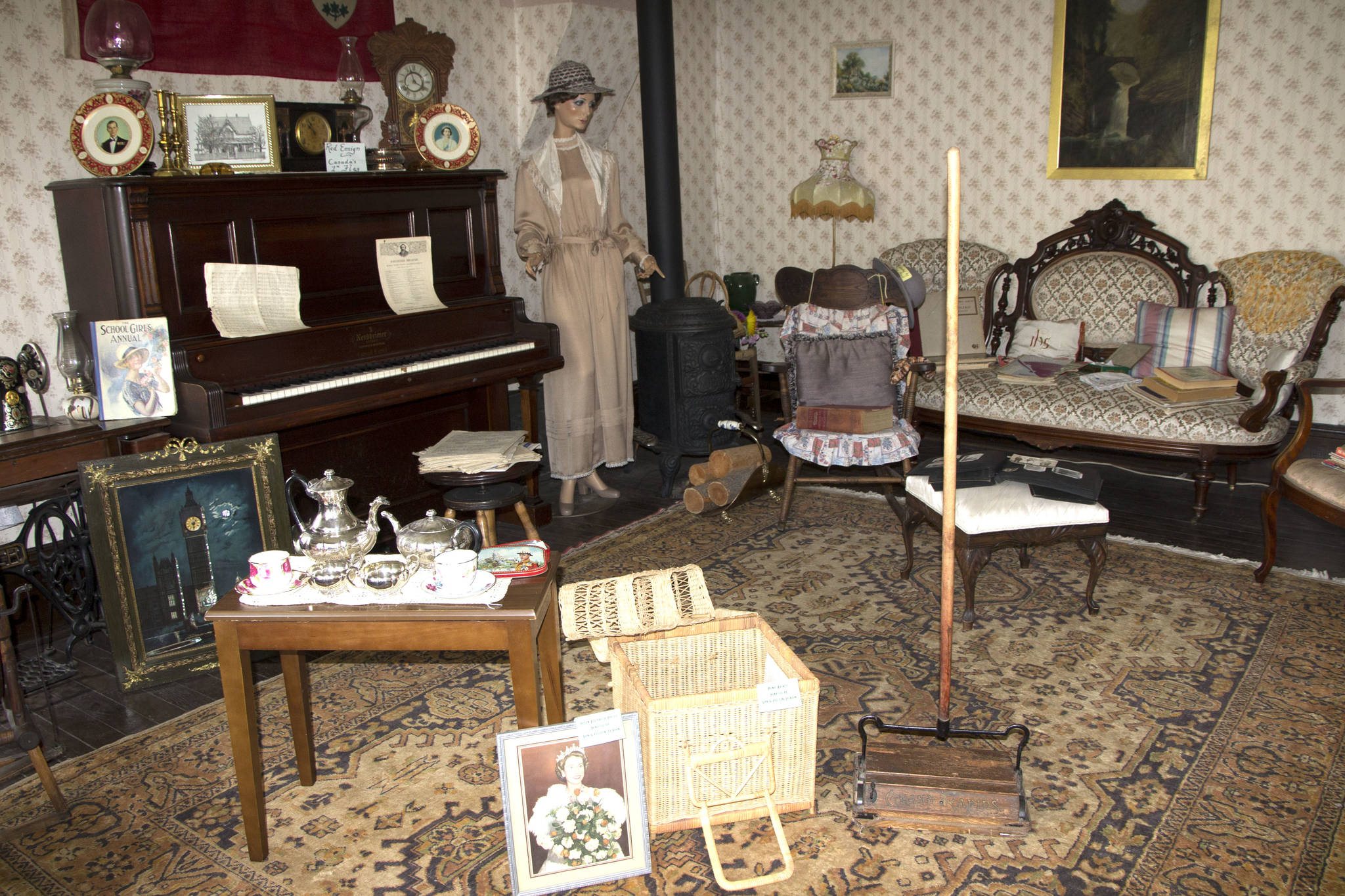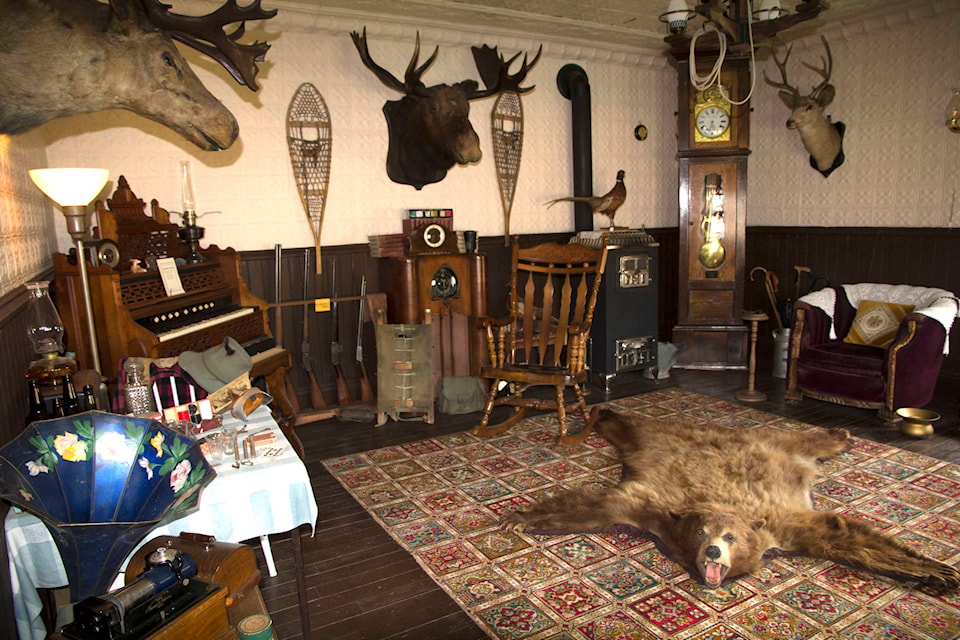When Benjamin and Laura McNeil moved into the 105 Roadhouse, it marked the beginning of their married life together.
Today, their home - along with intimate love letters, Laura’s dresses and even their children’s room - has been preserved as the museum at the 108 Mile Heritage site. Open to the public for a $2.50 donation, the museum offers a snapshot of what life was like from the 1820s through the following decades to today.
An impromptu tour of the museum starts in the kitchen, stuffed with a hodgepodge of everything a woman needed back in the day, from a cream separator and butter churn to a hair washing station, icebox, party line telephone and heavy-duty ringer washer for blankets and linens.
“In my opinion, you had to be a very strong woman to work at something like this because they had to be here most of their day,” said Sheila Willams, the site’s caretaker. “You had to be here bright and early in the morning and my guess is you wouldn’t leave until it was time to go to bed. The laundry alone would take up a whole day.”
She pointed to all the different contraptions, noting: “You had to turn it and crank and flip it and all sorts of things.”
A few newer items are among the old, including dainty teacups and saucers, donated by local residents. In pre-COVID years, Williams said, the fine china would be used in a public tea party with strawberry shortcake - something she hopes will be reintroduced.
“It seems like our children don’t want these types of things,” Williams said. “They don’t like them so they bring them here and we do our best to display them.”
The tour wends its way down the corridor, past a glass case holding a set of silverware donated by a family in Lac La Hache. The knives have notches at the end to take the bone out of fish. Williams noted the knives took on the flavour of the fish and couldn’t be used for anything else.
She steps into a room near the front door - the “bull pen” or the “man cave of the olden days.” Animal heads are mounted on the walls, their glassy eyes watching over the room, while a bearskin rugs covers the floor. A grandfather clock from 1906 stands tall in the corner, its feet removed because it was too tall to fit in the room.
“There were lots of hunters in those days,” Williams said.
She pointed out the tin panel ceiling, “a great fire retardant.” The tin panelling is also on the outside the house, made to look like brick.
Across the hall is Williams’ favourite room - the ladies’ parlour, adorned with furniture mostly from the 1850s. People often remark on the old-fashioned carpet cleaner. “I love this room. It’s pretty,” Williams said.
She points out a small framed photograph by the door. “Here is Benjamin McNeil who built this place and his bride.”
The McNeils’ 105 Roadhouse was nearly torn down when the highway was being expanded. The 100 Mile and District Historical Society got funding and moved the house to the Heritage site. A barn that belongs with the house, still close to the highway at 105 Mile, is expected to eventually be moved to the site.
READ MORE: Cougar warning in 108 Mile Ranch
Williams leads the way upstairs to the McNeils’ original bedroom. She noted the beds and furniture were shorter back then. A tall woman in the 1800s would have been about 5’2, a man about 5’7.
Along with Laura McNeil’s clothes and a bedspread woven and dyed by her grandmother in 1820, the room features a stroller that belonged to Lord Martin Exeter and a Grizzly bear rug - the only one in the house.
“There’s a little bit from all over the place,” Williams said.
Next door is the childrens’ room - the McNeils had two boys - and a series of toys and books.
In the hallway, Williams draws attention to a small patch of original wallpaper - a thick cardboard that would help keep the draft out. It’s in a small alcove holding typewriters and adding machines. Nearby the ceiling is a dark, gloomy colour.
“That was because of all the soot and the lamps,” Williams said. “Otherwise you’d be washing the ceiling all the time.”
In another glass cabinet are the love letters Benjamin wrote to his future wife - then Laura Blackwell - while she was teaching in Victoria. A student at the museum has typed the letters out, and Williams hope they can be turned into a scrapbook.
The letters are among two small leather-bound books containing “the history of the world.”
“The housewives used to keep track of the daily weather and what was happening on the day,” Williams said.
Those who wanted more news could read the Evening Telegraph, published in Toronto. In 1876, they could buy a copy for two cents.
Further down the hallway is the “gentleman’s room,” filled with boxing gloves, skates, books and cameras as well as shaving equipment. Next door, in the sewing room, a mannequin is at the loom, while a machine on a table beside her holds a half-knitted sock.
Across the hall is what Williams calls “the Thomas room.” It is furnished for a man who would rent it for the night. On the bed is a 100 per cent wool men’s bathing suit.
“I would think when you got out of the water it would fall off because it would be so heavy with water,” Williams said.
The tour ends at a room designated for a lady, decorated with a yoyo quilt and a series of small Canadian books and pamphlets on how to wash dishes and make a meal.
Several curling irons are on a table by the window. One of them is electric but Williams noted in the old days, the curling irons were often heated on the stove.
“One lady said it burnt her hair right off,” Williams said.
The museum, which welcomes donations from the local area, is open Friday to Monday from 11 a.m. to 4 p.m.
kelly.sinoski@100milefreepress.net
Like us on Facebook and follow us on Twitter

